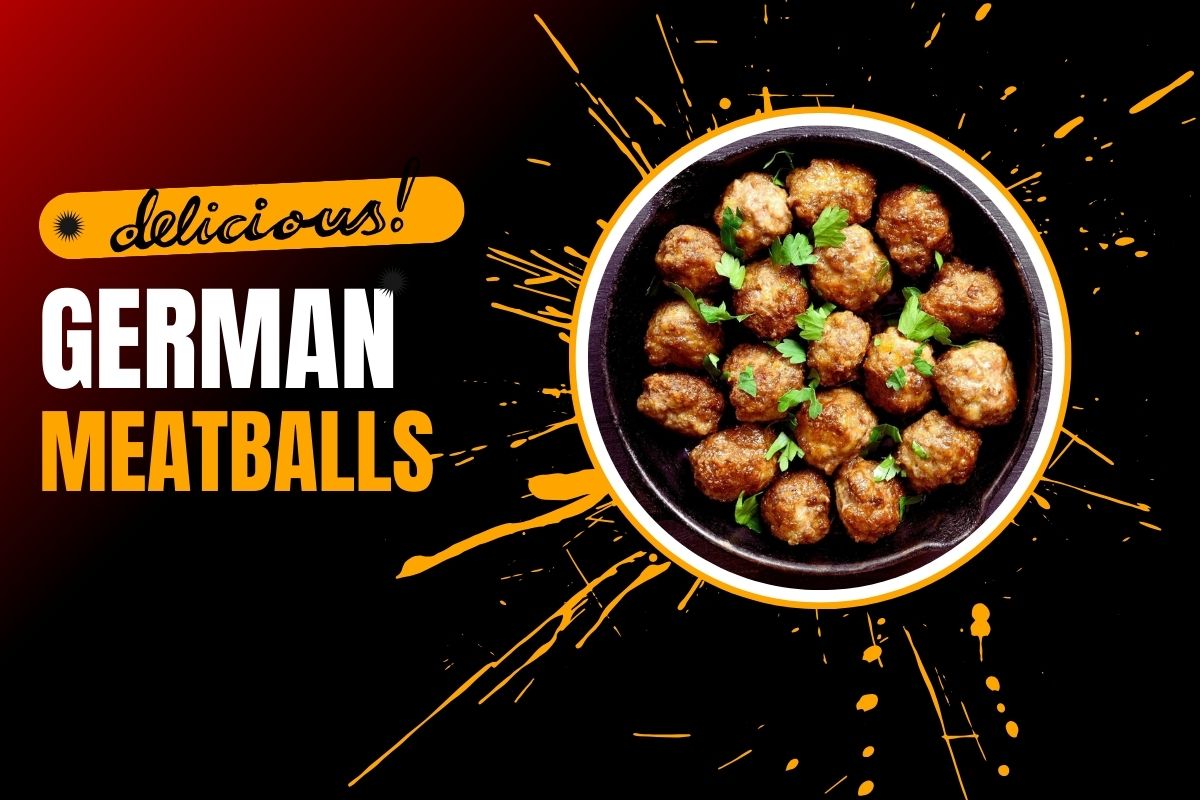Germany, the land of sausages, pretzels, and hearty fare, also boasts a delectable meatball dish known as Königsberger Klopse or German Meatballs. These delectable spheres of seasoned ground meat, simmered in a creamy sauce, are a beloved staple in German cuisine. Originating from the northern regions of Germany, particularly the city of Königsberg (now Kaliningrad, Russia), these flavorful spheres have a history that extends beyond a single city.
A Prussian Legacy: The Origins of Königsberger Klopse
Königsberg, a former Prussian city (now Kaliningrad, Russia), is credited with birthing this dish sometime in the 18th century. Food historians believe it was influenced by similar meatball preparations from neighboring Eastern European countries. The original recipe likely incorporated veal, a more luxurious meat at the time, reflecting the city’s status as a wealthy trading hub.
The Ingredients: A Weave of Savory Flavors
The core ingredients in Königsberger Klopse come together to create a symphony of textures and tastes. Here’s a breakdown of what you’ll typically find:
- Meat: Traditionally, a combination of ground veal, pork, and beef was used. Today, ground beef and pork are more common substitutions.
- Soaked Bread: A stale Kaiser roll or similar bread, soaked in water or milk, adds moisture and body to the meatballs.
- Aromatics: Finely chopped onions provide a base layer of savory sweetness.
- Binders: Eggs hold the mixture together, while breadcrumbs help absorb any excess moisture.
- Seasonings: Salt, pepper, and often a touch of German mustard add depth of flavor.
- Umami Boosters: Anchovies or anchovy paste, though optional, contribute a subtle umami richness. Don’t worry, the fishy taste doesn’t overpower the dish!
The magic truly happens in the sauce, where the cooked meatballs take center stage. A creamy white sauce, traditionally thickened with a roux (butter and flour) and enriched with egg yolk or cream, becomes the perfect canvas for the savory spheres. Capers, tiny pickled flower buds, add a delightful burst of brininess that complements the creaminess beautifully.
Shaping with Care: The Art of Forming Königsberger Klopse
Now comes the fun part – forming the meatballs! Here are some tips:
- Wet Your Hands: This prevents the mixture from sticking and ensures smooth, even balls.
- Start Small: Aim for meatballs about the size of a walnut. They cook more evenly and are easier to handle.
- Gently Does It: Don’t overwork the meat mixture. Overworking makes the meatballs tough. Gently roll them between your palms to form smooth spheres.
- Dimple Them (Optional): Make a slight indentation in the center of each ball with your thumb. This helps them cook evenly and prevents them from cracking.
Cooking with Confidence: From Stovetop to Plate
There are two primary methods for cooking German meatballs: simmering and pan-frying.
Simmering:
- Bring a pot of well-seasoned broth (beef, chicken, or vegetable) to a simmer.
- Gently add the formed meatballs and simmer for 15-20 minutes, or until cooked through. The internal temperature should reach 160°F (71°C).
Pan-Frying:
- Heat a generous amount of oil or butter in a large skillet over medium heat.
- Sear the meatballs on all sides until golden brown.
- Once browned, remove them from the pan and set aside.
- Deglaze the pan with white wine or broth, scraping up any browned bits. This adds flavor to the sauce.
- Pour the broth mixture into a pot and bring to a simmer. Add the pre-cooked meatballs and simmer for another 10 minutes.
The Creamy Sauce:
While the meatballs simmer, prepare the creamy sauce. Here’s a general approach:
- Melt butter in a saucepan over medium heat.
- Whisk in flour to create a roux. Cook for a minute, stirring constantly.
- Gradually whisk in warm broth from the pot with the meatballs, a little at a time, to avoid lumps.
- Once you have a smooth sauce base, stir in cream, egg yolk (if using), and capers.
- Season with salt and pepper to taste.
- Let the sauce simmer for a few minutes to thicken slightly.
Beyond Königsberger Klopse: A World of German Meatballs Variations
Germany boasts a rich regional culinary heritage, and meatballs are no exception. Here are two popular German meatballs variations:
- Königsberger Klopse: This famous variation hails from Prussia (East Germany). It uses veal or pork meatballs simmered in a broth flavored with unexpected ingredients like anchovies, lemon, and capers. The dish is finished with a creamy caper sauce.
- Regional variations: While the core idea of a seasoned meatball remains the same, cooking methods differ. Some regions fry the meatballs, while others prefer boiling them. Breadcrumbs or soaked bread are used as binders, and some variations might include bacon or onions.
Other Tips
- Experiment with different seasonings and flavorings to customize the taste of your meatballs. Try adding chopped herbs like parsley or dill, or spice things up with a dash of paprika or mustard.
- For a healthier alternative, consider using lean ground turkey or chicken instead of beef and pork. You can also opt for whole wheat breadcrumbs for added fiber.
- To make ahead, prepare the meatball mixture and shape the meatballs in advance, then refrigerate or freeze until ready to cook. This makes for a convenient weeknight meal or party appetizer.
- Don’t forget the sauce! Whether you prefer a traditional broth-based sauce or a creamy gravy, the sauce is what brings the dish together and elevates the flavors of the German meatballs


